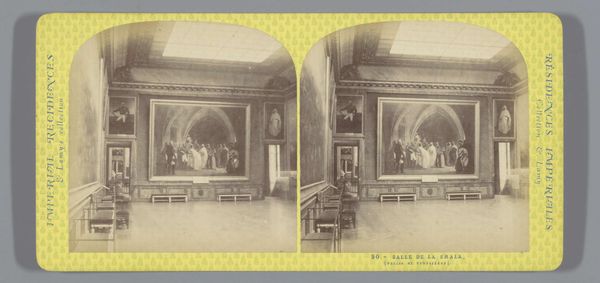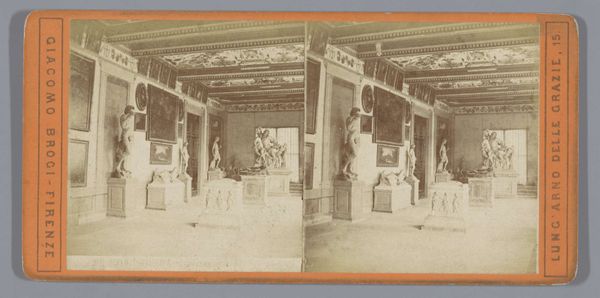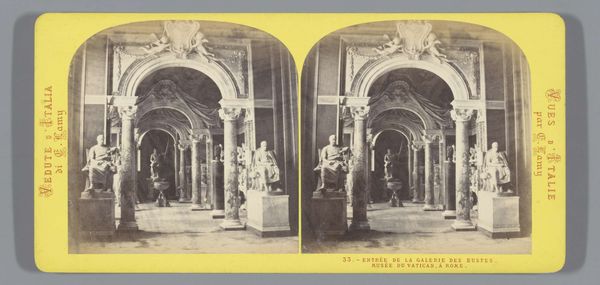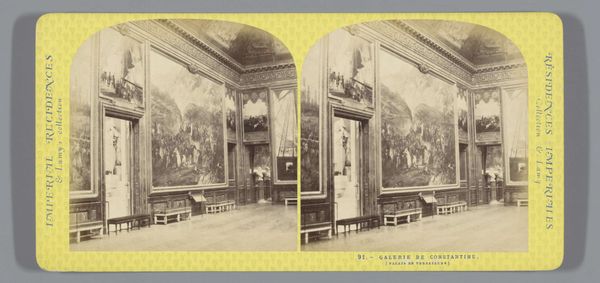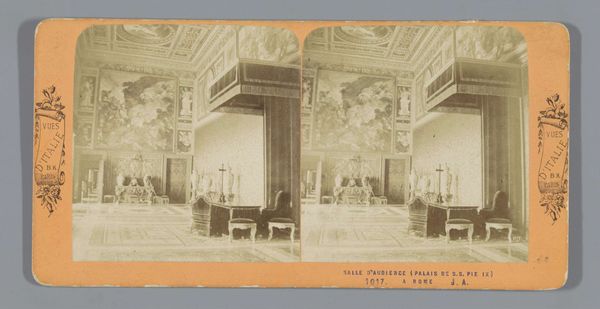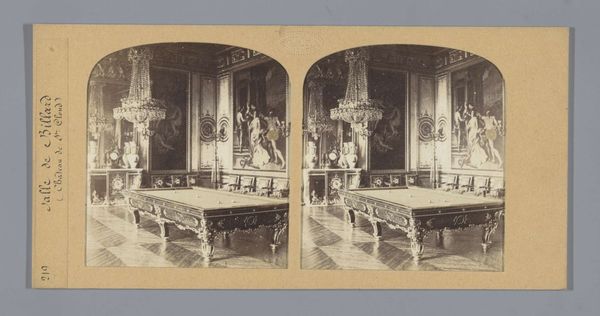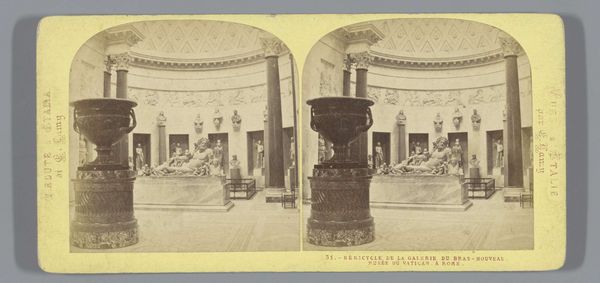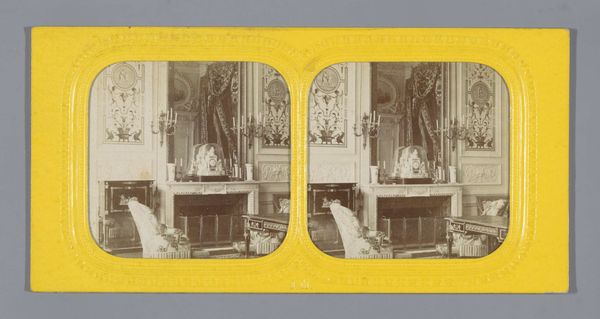
print, photography, sculpture, albumen-print
#
portrait
# print
#
photography
#
sculpture
#
albumen-print
#
realism
Dimensions: height 85 mm, width 170 mm
Copyright: Rijks Museum: Open Domain
Curator: Looking at this stereoscopic albumen print by Ernest Eléonor Pierre Lamy, titled "Interior of a Hall in the Palace of Versailles," circa 1860-1880, the grandeur is instantly apparent. The architecture dictates a certain level of regal expectation for the contents it holds, wouldn't you agree? Editor: Absolutely, that axial symmetry coupled with the subtle tonal range creates a certain hushed reverence. The light plays exquisitely on the polished floors, highlighting the cool monumentality of the space. But what interests me more is its industrial context. Albumen prints, developed around 1850, signify a shift in photography towards mass production and wider accessibility. How did the circulation of such images reshape the understanding, and perhaps the myth, of Versailles? Curator: That's a salient point about its impact on a wider audience. Note the inclusion of both sculpture and history painting within the photographic frame; the composition presents these various art forms for potential consumerism as collectibles for tourists. Each component carries distinct socio-economic associations. How do we navigate the historical setting in a new age? Editor: Exactly. The albumen print process itself speaks to this. Egg whites, sourced from the poultry industry and combined with silver nitrate. A somewhat domestic product is turned into an advanced technology, capable of preserving, disseminating, and ultimately commercializing what was once an exclusive aristocratic setting. Think about the labor involved in sourcing the albumen. Curator: And consider how the photographic print itself transforms from document to artifact; the material itself taking on historical weight over time as printing methodologies shift. In what ways might Lamy be commenting on how the proliferation of reproducible art flattens the uniqueness of physical experiences or artistic creations? Editor: Well, Lamy isn’t just capturing a space, he’s participating in its reproduction and re-evaluation for a modern audience, even making an item like a photo for our cultural analysis. Curator: Looking at the stereoscopic technique further reinforces that reading of how Versailles, previously only an actual experiential locale for a fortunate elite, becomes, here and now, also a consumable, easily shareable artifact. A layered story of making and meanings. Editor: I think we have indeed revealed something meaningful about how even the process, material, and maker, matter when consuming artworks in this setting. Curator: Indeed, something for visitors to keep in mind when exploring not just this albumen print, but every cultural object around us.
Comments
No comments
Be the first to comment and join the conversation on the ultimate creative platform.
